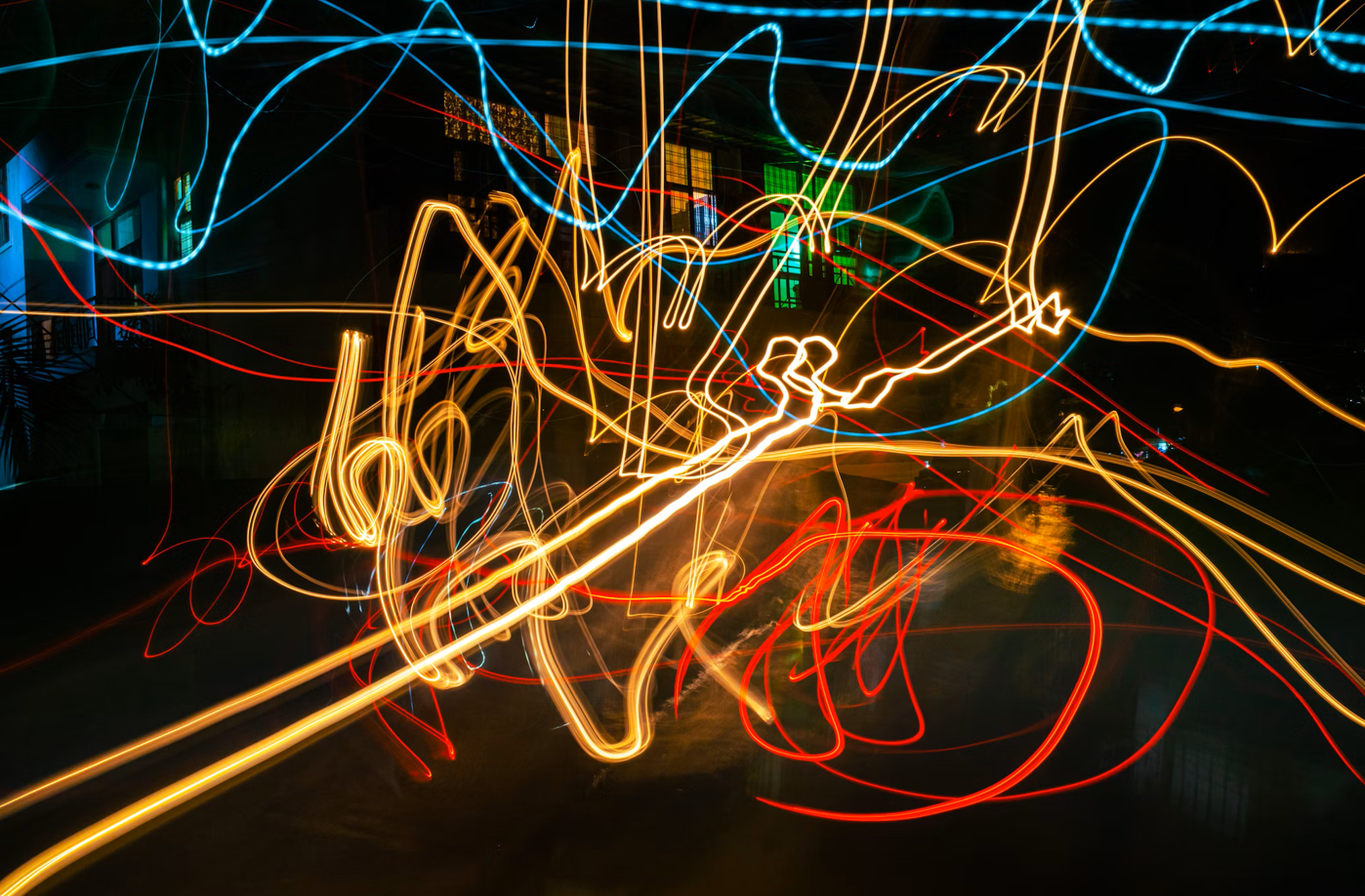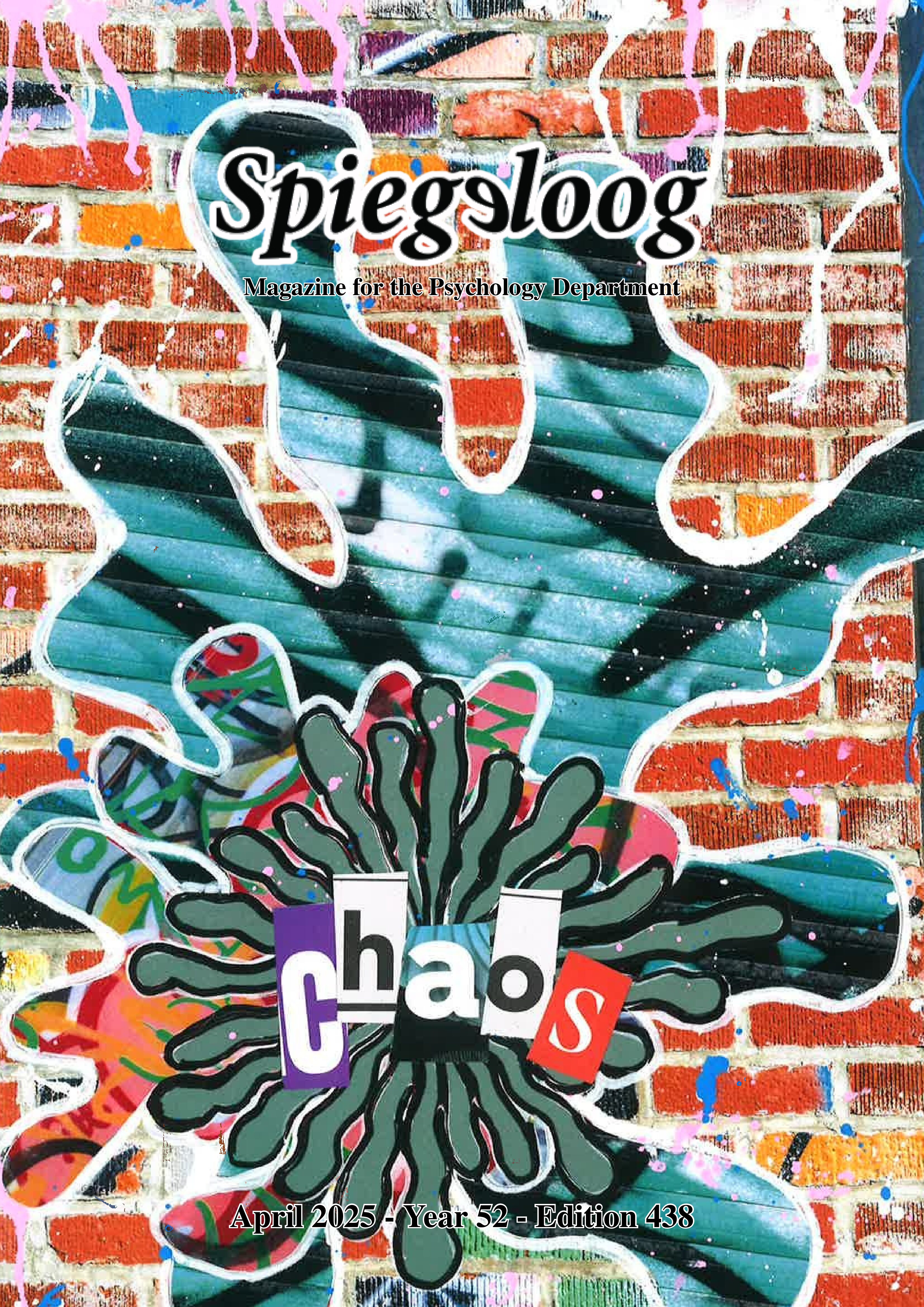In the beginning—before thought, before words, before meaning—there was matter and there was chaos. Then, at some forgotten moment in time, a shift occurred: chaos became life, life became mind, and soon—the mind began to ask questions. How did the primordial soup of non-living molecules evolve to become the organic compounds that make up all living matter? How was the unicellular life of the proterozoic eon driven to form allegiances of multicellular organisms? How did the lump of matter we call the brain give rise to the mind—capable of reflecting thought, purpose and meaning?
In the beginning—before thought, before words, before meaning—there was matter and there was chaos. Then, at some forgotten moment in time, a shift occurred: chaos became life, life became mind, and soon—the mind began to ask questions. How did the primordial soup of non-living molecules evolve to become the organic compounds that make up all living matter? How was the unicellular life of the proterozoic eon driven to form allegiances of multicellular organisms? How did the lump of matter we call the brain give rise to the mind—capable of reflecting thought, purpose and meaning?

Photo by Soheb Zaidi

Photo by Soheb Zaidi
These questions embody the essence of nature’s transformative adaptation to chaos. The environments that catalysed the evolution of these systems were rich with uncertainty, which was seized as an opportunity for growth and serendipity. And yet, somewhere along the path of this evolution, the conscious mind recoiled and began to fear the unknown. Humans are burdened with foresight: we avert risk, we cling to order. We seek meaning, yet often turn away from the uncertainty in which meaning is forged. Unlike other complex systems that embrace chaos as a driver of evolution, humans sabotage growth in the face of inevitable unpredictability. In striving for consistency, we remain trapped in unfulfilling commitments, and cling to rigid structures—fearing the upheaval that comes with disrupting the status quo. We call it risk, loss, failure; we adhere to this illusion of control, forgetting that it was uncertainty that shaped the mind – that avoiding chaos turns us away from the very thing that makes us most alive.
It was in his book How Nature Works where physicist Per Bak introduced the concept of self-organised criticality as a framework for understanding the behaviour of life. He emphasised how nature’s perpetual disbalance gave rise to complex systems that evolve not just by learning from chaos, but by actively seeking it (Bak, 1999). A system is complex when its constituents form an interdependent and diverse organisation of autonomous interacting units, collectively generating dynamic behavior otherwise unattainable by individual components. Complexity theory extracts the essence of these systems’ approach to unpredictability, seeking to explain the adaptive behaviours that enables their evolutionary resilience. Cells, ecosystems, and the brain are all complex systems—synergies of self-organising units that benefit from uncertainty.
The theory of criticality, specifically self-organised criticality, attributes the revolutionary resilience of complex systems to their ability to both balance and seek the edge of chaos. This state exists between stability and volatility, where stability ensures cohesion in times of change, and volatility enables sensitivity and responsiveness to external forces. To better illustrate the nature of self-organised criticality, let us imagine Per Bak’s analogy of the sandpile. Picture the conical structure that emerges from releasing grains of sand onto a surface – and how, as the grains continue to fall, the accumulating mass begins to compromise the friction which once held the grains in place. Note how suddenly, a critical point presents itself: where even a single grain added to the pile could trigger an outsized effect, a fundamental restructuring, as an avalanche of sand is sent cascading down the pile. The interdependence and variability between the individual grains of sand characterise it as a complex system: mass collected at the top of the pile effectively ripples and redistributes across the system. The edge of chaos is symbolised by the critical phase in which the sandpile is most sensitive to external disturbances. The precise moment, or rather the exact grain of sand that triggers the pile’s collapse is unpredictable, and yet the pile organises itself cone-like because it seeks the inevitable restructuring. In the long term, collapse grows its capacity to collect more sand. Like sandpiles, complex systems reflect a self-organised change-anticipation; they harness the edge of chaos with optimised sensitivity to internal and external environments—a flexibility that perseveres potential collapse in the face of unpredictably variable environments, and brings forth the evolutionary advantages of adaptation and novelty.
“We call it risk, loss, failure; we adhere to this illusion of control, forgetting that it was uncertainty that shaped the mind – that avoiding chaos turns us away from the very thing that makes us most alive.”
Per Bak noted that self-organised criticality is scale-invariant: that the principle applies to understanding the behaviour of complex micro– and macroscopic systems alike. On a neural level, growing evidence suggests that certain networks of the brain adapt toward the edge of chaos: embracing chaos through diversified responsiveness and heightened sensitivity, while maintaining stability through homeostatic regulation and synaptic pruning. This balance optimizes transmission and processing while preventing hypercriticality and over-excitation, such as that observed in epilepsy (Beggs, 2022). Now, consider how this aligns with the so-called Flow State – how heightened performance and sense of meaning is achieved when there is a complementarity between one’s skill and the level of a challenge (Linden et al, 2020). Moreover, within the theme of cognition, educational theories also demonstrate a similar pattern: where learning efficiency peaks when there’s an effective balance of ability and security with novelty and autonomy (McLeod, 2024). The enlarged growth-potential that arises from embracing unpredictability applies across physiological, behavioural and cognitive domains of psychology, and serves as a metaphor for the enhanced flexibility and synthesis we achieve when toeing the line at the edge of chaos.
The scale invariability of criticality is not limited to the operations of the mind, and self-organized criticality appears to be a fundamental principle of complexity. Even societies oscillate between stability and upheaval; historical cycles, such as the Industrial Revolution or the collapse of empires, demonstrate how humans often experience growth amidst chaos. In this sense, political uprising, technological breakthroughs, and cultural shifts could be said to occur when systems reach volatile critical points. Criticality can explain why ecosystems, such as rainforests and coral reefs, have diverse food chains and feedback loops that support the delicate balance between too much order—where the disruption of a one-to-one food chain would collapse an entire ecosystem, and too much chaos—where insensitivity to ecological feedback would disable the systems’ adaptive capacity. Criticality is applied today to understand the complex behaviour of large-scale natural phenomena: the momentum of wildfires, trajectory of hurricanes and eruption of volcanos. These patterns, where the edge of chaos offers a system the greatest balance of sensitivity and adaptability, suggest that seeking the edge of chaos is not just a feature of neurons or ecosystems—but a universal principle of resilience. If nature instinctively finds equilibrium between order and chaos to optimize survival, what might this reveal about how we, as individuals and societies, navigate uncertainty?
“By understanding that chaos is not just disorder but an essential part of natural adaptation, we can shift our perspective on uncertainty as a source of fear, and instead harness the edge of chaos as the necessary fuel of our evolution.”
Humans crave predictability – control provides the force of empowerment that enables us to exercise autonomy over our lives. It allows us to derive purpose from our intentions, and meaning from our actions. And yet, even our creativity thrives in uncertainty—whether in art, music, or science, groundbreaking ideas emerge when people embrace ambiguity and risk-taking. The unpredictability of our lives is inevitable, and our ambitions are constantly challenged by the endless factors circumstancing our actions. Weather, stock markets and political outcomes collectively exemplify our perpetual inability to predict the future, and rightfully so. Perhaps our expectations are misplaced if not arrogant; perhaps our behaviours should learn to imitate the mechanisms of our minds and the elements of natural complexity that surround us; perhaps we should reconsider our obsession with predictability, redirect ourselves in preparation for our inevitable encounters with uncertainty, seeking the edge of chaos to foster the metamorphosis that coincides with it. By understanding that chaos is not just disorder but an essential part of natural adaptation, we can shift our perspective on uncertainty as a source of fear, and instead harness the edge of chaos as the necessary fuel of our evolution. <<
References
- Bak, P. (1999). How nature works : the science of self-organized criticality. Copernicus.
- Beggs, J. M. (2022). Addressing skepticism of the critical brain hypothesis. Frontiers in Computational Neuroscience, 16. https://doi.org/10.3389/fncom.2022.703865
- Linden, D., Tops, M., & Bakker, A. B. (2020). Go with the flow: A neuroscientific view on being fully engaged. European Journal of Neuroscience, 53(4). https://doi.org/10.1111/ejn.15014
- McLeod, S. (2024). Vygotsky’s Zone of Proximal Development. ResearchGate. https://www.researchgate.net/publication/383563118_Vygotsky
These questions embody the essence of nature’s transformative adaptation to chaos. The environments that catalysed the evolution of these systems were rich with uncertainty, which was seized as an opportunity for growth and serendipity. And yet, somewhere along the path of this evolution, the conscious mind recoiled and began to fear the unknown. Humans are burdened with foresight: we avert risk, we cling to order. We seek meaning, yet often turn away from the uncertainty in which meaning is forged. Unlike other complex systems that embrace chaos as a driver of evolution, humans sabotage growth in the face of inevitable unpredictability. In striving for consistency, we remain trapped in unfulfilling commitments, and cling to rigid structures—fearing the upheaval that comes with disrupting the status quo. We call it risk, loss, failure; we adhere to this illusion of control, forgetting that it was uncertainty that shaped the mind – that avoiding chaos turns us away from the very thing that makes us most alive.
It was in his book How Nature Works where physicist Per Bak introduced the concept of self-organised criticality as a framework for understanding the behaviour of life. He emphasised how nature’s perpetual disbalance gave rise to complex systems that evolve not just by learning from chaos, but by actively seeking it (Bak, 1999). A system is complex when its constituents form an interdependent and diverse organisation of autonomous interacting units, collectively generating dynamic behavior otherwise unattainable by individual components. Complexity theory extracts the essence of these systems’ approach to unpredictability, seeking to explain the adaptive behaviours that enables their evolutionary resilience. Cells, ecosystems, and the brain are all complex systems—synergies of self-organising units that benefit from uncertainty.
The theory of criticality, specifically self-organised criticality, attributes the revolutionary resilience of complex systems to their ability to both balance and seek the edge of chaos. This state exists between stability and volatility, where stability ensures cohesion in times of change, and volatility enables sensitivity and responsiveness to external forces. To better illustrate the nature of self-organised criticality, let us imagine Per Bak’s analogy of the sandpile. Picture the conical structure that emerges from releasing grains of sand onto a surface – and how, as the grains continue to fall, the accumulating mass begins to compromise the friction which once held the grains in place. Note how suddenly, a critical point presents itself: where even a single grain added to the pile could trigger an outsized effect, a fundamental restructuring, as an avalanche of sand is sent cascading down the pile. The interdependence and variability between the individual grains of sand characterise it as a complex system: mass collected at the top of the pile effectively ripples and redistributes across the system. The edge of chaos is symbolised by the critical phase in which the sandpile is most sensitive to external disturbances. The precise moment, or rather the exact grain of sand that triggers the pile’s collapse is unpredictable, and yet the pile organises itself cone-like because it seeks the inevitable restructuring. In the long term, collapse grows its capacity to collect more sand. Like sandpiles, complex systems reflect a self-organised change-anticipation; they harness the edge of chaos with optimised sensitivity to internal and external environments—a flexibility that perseveres potential collapse in the face of unpredictably variable environments, and brings forth the evolutionary advantages of adaptation and novelty.
“We call it risk, loss, failure; we adhere to this illusion of control, forgetting that it was uncertainty that shaped the mind – that avoiding chaos turns us away from the very thing that makes us most alive.”
Per Bak noted that self-organised criticality is scale-invariant: that the principle applies to understanding the behaviour of complex micro– and macroscopic systems alike. On a neural level, growing evidence suggests that certain networks of the brain adapt toward the edge of chaos: embracing chaos through diversified responsiveness and heightened sensitivity, while maintaining stability through homeostatic regulation and synaptic pruning. This balance optimizes transmission and processing while preventing hypercriticality and over-excitation, such as that observed in epilepsy (Beggs, 2022). Now, consider how this aligns with the so-called Flow State – how heightened performance and sense of meaning is achieved when there is a complementarity between one’s skill and the level of a challenge (Linden et al, 2020). Moreover, within the theme of cognition, educational theories also demonstrate a similar pattern: where learning efficiency peaks when there’s an effective balance of ability and security with novelty and autonomy (McLeod, 2024). The enlarged growth-potential that arises from embracing unpredictability applies across physiological, behavioural and cognitive domains of psychology, and serves as a metaphor for the enhanced flexibility and synthesis we achieve when toeing the line at the edge of chaos.
The scale invariability of criticality is not limited to the operations of the mind, and self-organized criticality appears to be a fundamental principle of complexity. Even societies oscillate between stability and upheaval; historical cycles, such as the Industrial Revolution or the collapse of empires, demonstrate how humans often experience growth amidst chaos. In this sense, political uprising, technological breakthroughs, and cultural shifts could be said to occur when systems reach volatile critical points. Criticality can explain why ecosystems, such as rainforests and coral reefs, have diverse food chains and feedback loops that support the delicate balance between too much order—where the disruption of a one-to-one food chain would collapse an entire ecosystem, and too much chaos—where insensitivity to ecological feedback would disable the systems’ adaptive capacity. Criticality is applied today to understand the complex behaviour of large-scale natural phenomena: the momentum of wildfires, trajectory of hurricanes and eruption of volcanos. These patterns, where the edge of chaos offers a system the greatest balance of sensitivity and adaptability, suggest that seeking the edge of chaos is not just a feature of neurons or ecosystems—but a universal principle of resilience. If nature instinctively finds equilibrium between order and chaos to optimize survival, what might this reveal about how we, as individuals and societies, navigate uncertainty?
“By understanding that chaos is not just disorder but an essential part of natural adaptation, we can shift our perspective on uncertainty as a source of fear, and instead harness the edge of chaos as the necessary fuel of our evolution.”
Humans crave predictability – control provides the force of empowerment that enables us to exercise autonomy over our lives. It allows us to derive purpose from our intentions, and meaning from our actions. And yet, even our creativity thrives in uncertainty—whether in art, music, or science, groundbreaking ideas emerge when people embrace ambiguity and risk-taking. The unpredictability of our lives is inevitable, and our ambitions are constantly challenged by the endless factors circumstancing our actions. Weather, stock markets and political outcomes collectively exemplify our perpetual inability to predict the future, and rightfully so. Perhaps our expectations are misplaced if not arrogant; perhaps our behaviours should learn to imitate the mechanisms of our minds and the elements of natural complexity that surround us; perhaps we should reconsider our obsession with predictability, redirect ourselves in preparation for our inevitable encounters with uncertainty, seeking the edge of chaos to foster the metamorphosis that coincides with it. By understanding that chaos is not just disorder but an essential part of natural adaptation, we can shift our perspective on uncertainty as a source of fear, and instead harness the edge of chaos as the necessary fuel of our evolution. <<
References
- Bak, P. (1999). How nature works : the science of self-organized criticality. Copernicus.
- Beggs, J. M. (2022). Addressing skepticism of the critical brain hypothesis. Frontiers in Computational Neuroscience, 16. https://doi.org/10.3389/fncom.2022.703865
- Linden, D., Tops, M., & Bakker, A. B. (2020). Go with the flow: A neuroscientific view on being fully engaged. European Journal of Neuroscience, 53(4). https://doi.org/10.1111/ejn.15014
- McLeod, S. (2024). Vygotsky’s Zone of Proximal Development. ResearchGate. https://www.researchgate.net/publication/383563118_Vygotsky


